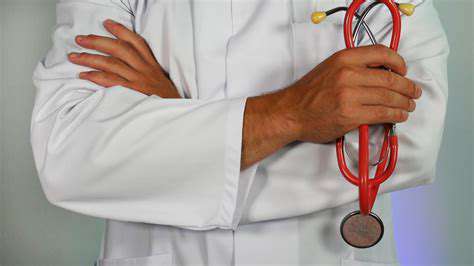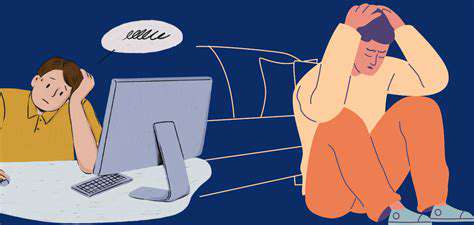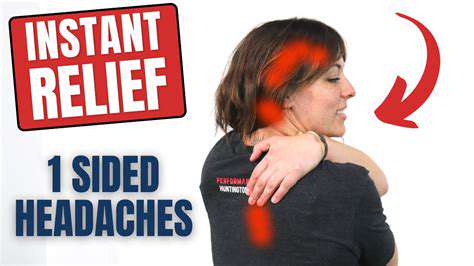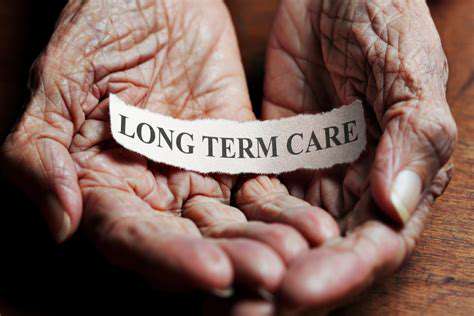Headache and Neck Pain: Understanding Symptoms and Solutions
Common Causes of Headache and Neck Pain

Stress and Anxiety
Stress and anxiety are incredibly common triggers for headaches and neck pain. Chronic stress, particularly from work or personal life, can lead to muscle tension in the head and neck, causing pain. Anxiety often manifests as physical symptoms, including tension headaches, and can contribute to chronic neck pain due to the constant tightening of muscles.
Recognizing and managing stress through relaxation techniques, exercise, or mindfulness can significantly alleviate headache and neck pain caused by these factors. Seeking professional help for managing anxiety can also be a crucial step in preventing and treating these issues.
Poor Posture and Ergonomics
Maintaining poor posture, especially when sitting for extended periods, can strain the muscles in the neck and shoulders, leading to chronic pain. Poor ergonomic setups at work or while using electronic devices can further exacerbate these issues. Ergonomic adjustments, like a properly adjusted chair and monitor placement, can make a big difference in reducing the strain on the neck and back.
Regular stretches and exercises to improve posture can help strengthen supporting muscles and improve overall neck and back health. Incorporating these strategies can lead to a significant reduction in pain and discomfort.
Dehydration
Dehydration is often an underestimated factor in the development of headaches and neck pain. When the body is not properly hydrated, it can lead to muscle tension and spasms, and may not be able to function as it should.
Maintaining adequate fluid intake throughout the day is crucial for overall health and can help prevent headaches and neck pain. Drinking plenty of water, especially during and after physical activity, is a simple yet effective strategy to support hydration levels and avoid discomfort.
Degenerative Conditions
Certain degenerative conditions, such as arthritis or spinal stenosis, can lead to chronic neck pain and headaches. These conditions can cause inflammation, impingement of nerves, or structural changes in the neck. Early diagnosis and treatment by a medical professional are critical for managing these underlying conditions.
If you experience persistent or worsening neck pain and headaches, it's important to consult a doctor to determine if an underlying degenerative condition might be contributing to the issue. Professional medical advice and management strategies are vital in mitigating the long-term effects of these conditions.
Muscle Tension
Muscle tension, often caused by stress, poor posture, or repetitive movements, is a frequent culprit behind headaches and neck pain. These tight muscles can put pressure on nerves and blood vessels, leading to discomfort. Identifying and addressing these underlying causes can lead to considerable pain relief and long-term solutions.
Simple stretches, gentle massages, and relaxation techniques can often alleviate muscle tension and reduce pain. If muscle tension is severe or persistent, consultation with a physical therapist or doctor can provide targeted treatment plans.
Nutritional Deficiencies
Certain nutritional deficiencies, such as a lack of magnesium, can contribute to muscle spasms and tension in the head and neck, potentially leading to headaches and pain. Proper nutrition is essential for maintaining healthy muscle function and overall well-being. A balanced diet rich in essential vitamins and minerals is a key preventative measure.
Consulting a nutritionist or doctor to assess nutritional needs and address potential deficiencies is recommended, especially if you are experiencing recurrent headaches or neck pain. Addressing underlying nutritional deficiencies can lead to significant improvements in overall health and reduce the occurrences of pain.
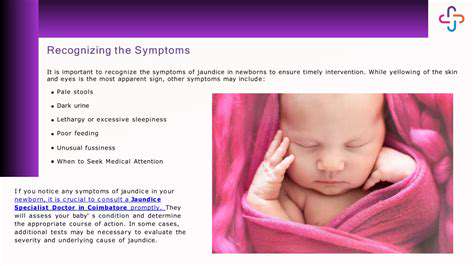
Effective Home Remedies and Lifestyle Changes
Acupressure and Herbal Remedies
Many people find relief from headaches and neck pain through acupressure techniques. Applying gentle pressure to specific points on the body, such as those located along the neck and shoulders, can help stimulate blood flow and release tension. Combining this with herbal remedies, like chamomile tea or ginger, can further enhance relaxation and soothe the affected areas. These natural approaches often work best as part of a holistic approach, addressing the underlying causes of pain rather than just the symptoms.
Some herbal remedies, while generally considered safe, may interact with certain medications. It's crucial to consult with a healthcare professional before incorporating new herbs or supplements into your routine, especially if you are already taking prescribed medications. Acupressure, when done correctly, can also provide significant relief, but improper techniques might worsen discomfort. Learning from a qualified practitioner ensures safe and effective use.
Dietary Adjustments for Pain Management
Certain foods and drinks can either exacerbate or alleviate headache and neck pain. For example, caffeine and alcohol are known triggers for some individuals. A diet rich in fruits, vegetables, and whole grains can contribute to overall well-being, potentially reducing inflammation and promoting better blood flow. Avoiding processed foods, sugary drinks, and excessive intake of sodium is also crucial for managing inflammation, which often plays a significant role in these types of aches and pains. Understanding personal dietary triggers can be a significant part of managing these persistent discomfort.
Consuming adequate hydration is also vital. Dehydration can lead to headaches and exacerbate existing neck pain. Staying well-hydrated supports overall bodily function, improves nutrient absorption, and helps maintain healthy blood pressure, which can directly impact pain relief. Adjusting your diet isn't just about avoiding triggers, it's about nourishing your body with the nutrients it needs to function optimally.
Mindfulness and Stress Reduction Techniques
Stress and tension often contribute to headaches and neck pain. Incorporating mindfulness techniques, such as deep breathing exercises and meditation, can help manage stress levels. Regular practice of these techniques can foster a sense of calm, reducing muscle tension in the neck and head. This approach not only addresses the immediate pain but also works on preventing future occurrences by managing the underlying stress that often triggers these issues. Learning to identify and manage stress triggers can significantly reduce chronic headaches and neck pain.
Neck Posture and Ergonomic Adjustments
Maintaining proper posture, particularly when sitting or working at a desk, is crucial for preventing neck pain. Poor posture puts stress on the neck muscles, leading to stiffness and discomfort. Making ergonomic adjustments in your workspace, such as using a supportive chair and ensuring proper monitor height, can significantly lessen stress on the neck and improve overall comfort. By proactively addressing posture, you're actively working to prevent future pain and discomfort, leading to a more comfortable and productive lifestyle. Understanding proper body mechanics and implementing these adjustments can have a dramatic positive impact on your overall well-being.
Physical Therapy and Gentle Exercises
In many cases, physical therapy can be a valuable tool for managing headache and neck pain. A physical therapist can develop a customized exercise program focused on strengthening neck muscles and improving flexibility. These exercises, combined with manual therapy techniques, can help alleviate pain, restore mobility, and prevent future episodes. Gentle exercises, such as stretching and range-of-motion movements, can effectively improve blood circulation, reducing stiffness and improving comfort in the neck and shoulder areas. Engaging in regular physical therapy, following prescribed exercises diligently, is essential to achieve optimal pain management and long-term well-being.

